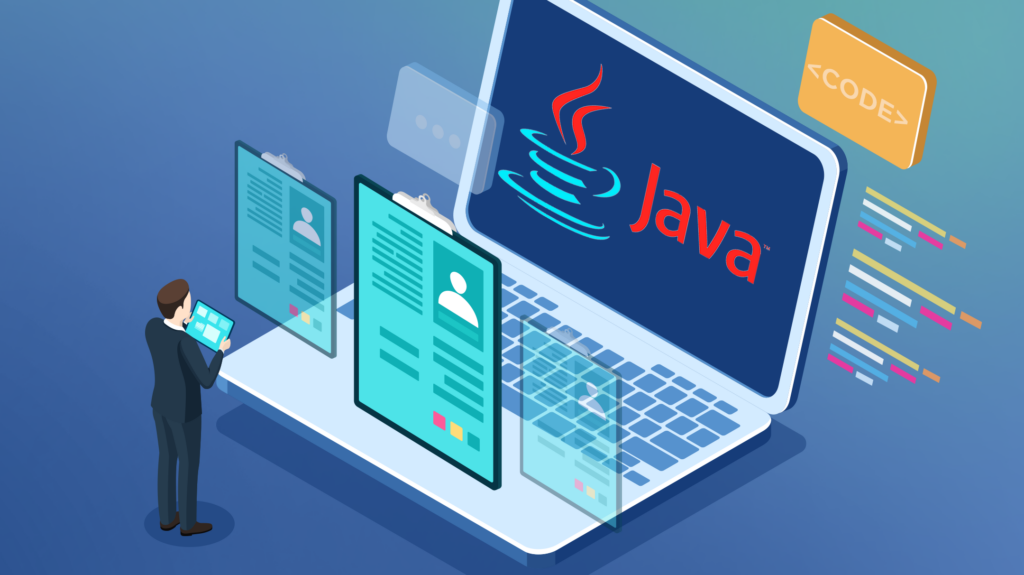Introduction:
Java is a versatile and widely used programming language that has become the backbone of many software applications and systems across various platforms. Knowing the fundamentals of Java is crucial whether you’re a novice hoping to learn programming or an expert developer trying to broaden your skill set.In this comprehensive guide, we’ll delve into the fundamentals of Java programming, covering everything from its history and syntax to key concepts and best practices.
History and Evolution of Java:
Early in the 1990s, James Gosling and his colleagues at Sun Microsystems developed Java.It was originally designed for interactive television, but its portability, security features, and robustness made it an ideal choice for Internet programming. The official release of Java 1.0 in 1996 marked the beginning of Java’s widespread adoption.
One of the key milestones in Java’s evolution was the introduction of the Java Virtual Machine (JVM), which allows Java programs to run on any platform that supports the JVM. This “write once, run anywhere” capability revolutionized software development by enabling developers to create platform-independent applications.
Over the years, Java has undergone several updates and enhancements, with major releases such as Java 5, Java 8, and Java 11 introducing new features and improvements to the language. The latest long-term support (LTS) release, Java 17, continues to build upon Java’s legacy with enhanced performance, security, and language features.
Getting Started with Java:
Configuring your development environment is a must before beginning Java programming.The Java Development Kit (JDK) is a prerequisite for writing and compiling Java code. You can download the JDK from the official Oracle website and install it on your system.
Once you have installed the JDK, you can use a text editor or an Integrated Development Environment (IDE) such as Eclipse, IntelliJ IDEA, or NetBeans to write your Java code. IDEs provide features like syntax highlighting, code completion, and debugging tools, making the development process more efficient and productive.
To compile and run your Java programs, you’ll need to use the Java compiler (javac) and the Java Virtual Machine (java). These tools come bundled with the JDK and allow you to translate your source code into bytecode and execute it on the JVM.
Understanding Java Syntax and Structure:
Java syntax is similar to other programming languages like C and C++, making it relatively easy for developers to learn. Here’s a brief overview of the basic elements of Java syntax:
Data Types: Java provides primitive data types such as int, double, boolean, and char, as well as reference data types like classes and interfaces.
Variables: In Java, variables are containers for storing data. Before they can be utilised, they need to be declared with a certain data type.Operators: Java supports various operators, including arithmetic, assignment, comparison, and logical operators, for performing calculations and comparisons.
Control Flow Statements: Java offers control flow statements such as if-else, switch, while, do-while, and for loops for executing code conditionally or iteratively.
Methods: Methods are reusable blocks of code that perform specific tasks. They can accept parameters and return values, allowing you to modularize your code and improve maintainability.
Object-Oriented Programming (OOP) Concepts:
Hings and Classes: An object is an instance of a class, while a class is a blueprint for making things. Classes specify an object’s behaviors (methods) and properties (attributes). Encapsulation Encapsulation is the process of hiding the internal state of an object and restricting access to its data and methods. It helps improve code maintainability and reusability.
Inheritance: Inheritance allows a class to inherit properties and behaviors from another class (superclass). It promotes code reuse and enables the creation of hierarchies of related classes.
The ability to consider objects of distinct classes as objects of a common superclass is known as polymorphism.. It allows for flexibility and extensibility in object interactions.
Exception Handling:
Exception handling is a critical aspect of Java programming that allows you to gracefully handle runtime errors and exceptions. Java provides a robust exception-handling mechanism through the use of try-catch blocks, which allow you to catch and handle exceptions that occur during program execution.
By using try-catch blocks, you can isolate and handle exceptional conditions without disrupting the flow of your program. Additionally, Java supports the use of finally blocks, which are executed regardless of whether an exception occurs, allowing you to perform cleanup tasks such as closing resources.
Working with Arrays and Collections:
Arrays and collections are essential data structures in Java that allow you to store and manipulate collections of elements. Arrays are fixed-size collections of elements of the same data type, while collections are dynamic and can grow or shrink in size.
Java provides a rich set of built-in classes and interfaces for working with arrays and collections, including the ArrayList, LinkedList, HashSet, and HashMap classes. These classes offer various methods and operations for adding, removing, and accessing elements, as well as iterating over collections using enhanced for loops or iterators.
Input and Output Operations:
Java provides powerful input and output (I/O) capabilities for reading from and writing to files, streams, and other sources. The java.io package contains classes and interfaces for performing I/O operations, including reading and writing bytes, characters, and objects.
Commonly used classes for I/O operations in Java include FileInputStream, FileOutputStream, FileReader, FileWriter, BufferedReader, and BufferedWriter. These classes provide methods for reading and writing data from and to files, as well as buffering and efficient handling of I/O operations.
Visit: The Folding Table’s Impact On Mountain Adventures
Conclusion:
In this guide, we’ve covered the history and evolution of Java, essential syntax and structure, object-oriented programming concepts, exception handling, working with arrays and collections, and input and output operations. Armed with this knowledge, you’re well-equipped to dive deeper into Java programming and explore its vast ecosystem of libraries, frameworks, and tools. If you’re interested in learning Java, consider enrolling in a best Java course in Agra, Dehradun, Moradabad, Mumbai, Delhi, Noida and all cities in India to further enhance your skills and expertise.



